Hot Mics: The Latest in Conferencing Audio Capture
Conference room audio: it’s not going to dazzle, entertain, or leave a lasting impression. That is, if it’s done right. Unlike most other tools of the pro AV trade, the goal of microphones in a well-engineered meeting room is for users to not even notice them at all.
But don't let this understated nature deceive you; there’s been a flurry of innovation in conferencing mics over the past few years. From new pickup technologies to versatile new form factors, if you haven’t looked at your microphones in a few years, then you’re likely not getting the best sound out of these crucial spaces.
Flexibility
“One of the advancements we’ve noticed is that as sound capture technologies improve dramatically, microphone installation options and methods also become much more flexible,” said Scott Krueckeberg, director at MXL Microphones. “We heard from one of our customers that they were innovating and expanding microphone placement to include other parts of a meeting room. In fact, they had installed MXL tabletop microphones onto ceilings.” Responding to this, the company began producing custom ceiling-mount pieces for its microphones.

One of these solutions is its new MXL AC-360-Z V2 boundary conferencing microphone, on which the company collaborated with engineers at Zoom Video Communications. Featuring 12 internal condenser capsules, the USB-powered mic has a 25-foot pickup range with full 360-degree coverage, according to the company. “In addition, it was designed with reliability and durability in mind,” Krueckeberg said. “It also harnesses Zoom’s internal digital sound processing (DSP) software to ensure optimal sound capture.”
According to Vaddio, 2019 was a big year for the conferencing specialists’ microphones, both in ceiling and tabletop form factors. “With an eye for modern design, we incorporated acoustical fabric wrap and sleek, capacitive touch controls, while improving our three-microphone-element pickup range and clarity performance,” said Beth Peterson, product marketing manager for Vaddio. “A true marriage of form and function.”
Vaddio CeilingMIC and TableMIC microphones offer built-in echo cancellation within the microphone pod, allowing for simple multi-unit installations without the need for DSP systems. The CeilingMIC comes with a 15-foot custom-length ceiling drop cable to speed installation in open or vaulted ceilings, and a standard RJ-45 connects the mic to the interface box. And the TableMIC has been redesigned to help diminish distracting noises. Featuring a three-element microphone, TableMIC includes capacitive touch controls to select camera presets and control calls.
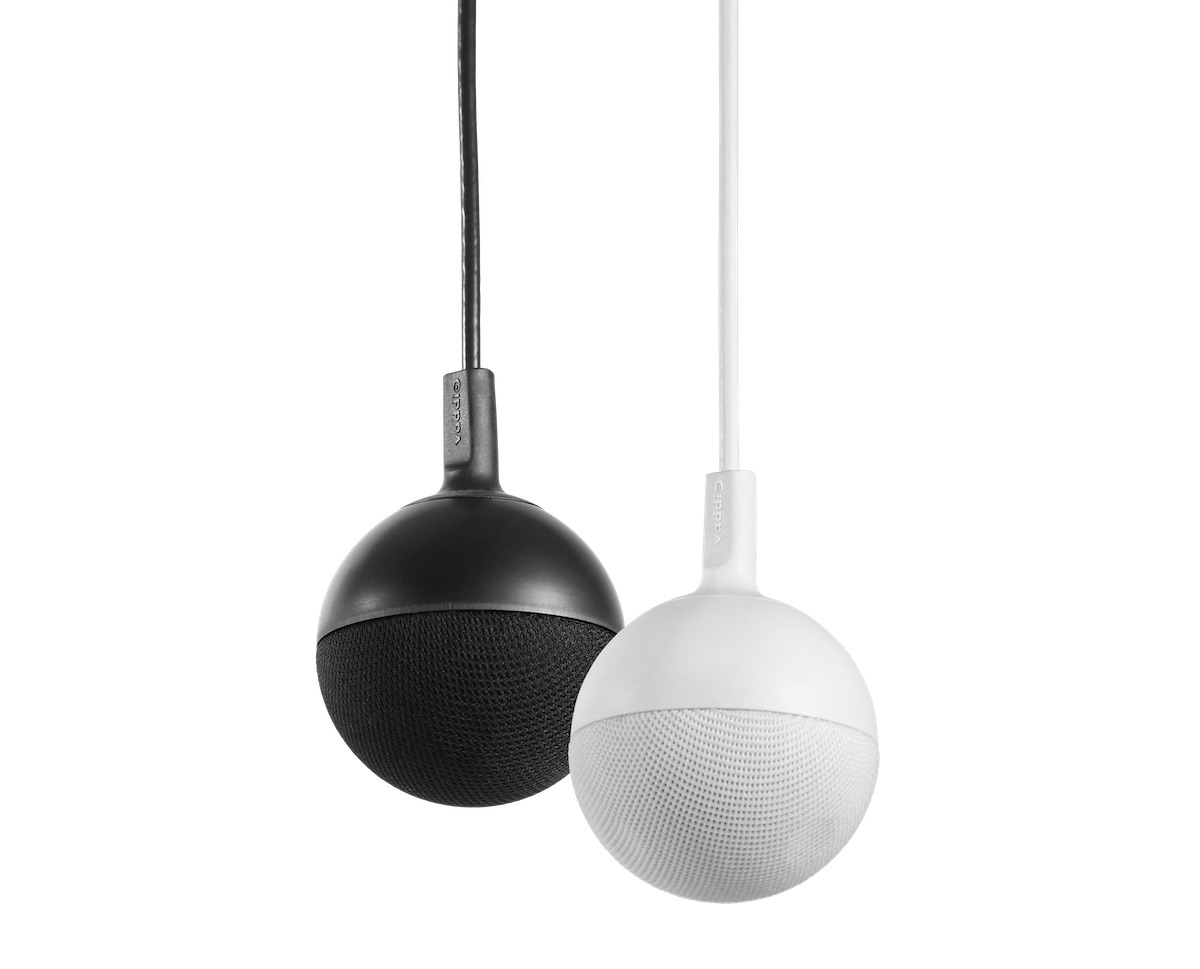
ClearOne has also been working to innovate on time-tested solutions, as well as helping to redefine the category altogether. “Generic boundary, gooseneck, and button mics have been available for tabletop applications for many years,” said Brent Johnson, marketing at ClearOne. “The recent advancements have been in the area of sophisticated DSP algorithms in our CONVERGE Pro 2 mixers that enable intelligent features and dramatically improved performance for those standard mics.” Features such as acoustic echo cancellation (AEC), noise cancelling, and feedback elimination enhance the pickup of existing microphones in a conferencing space.
A daily selection of features, industry news, and analysis for tech managers. Sign up below.
Going Up!
However, where the ClearOne sees the future of the category headed is upward—specifically, into the ceiling. The company’s latest product, the Beamforming Mic Array Ceiling Tile (BMA CT) is a beamforming mic array that’s designed to blend into a drop-ceiling grid. Using adaptive steering, the BMA CT is engineered to provide consistent room coverage without the need to adjust individual beams. Further, with AEC, noise cancellation, and beam selection, the BMA CT eliminates the need for per-beam processing in the DSP mixer. “These integrated features can significantly reduce system design complexity, simplify installation, consume less rack space, and lower costs,” Johnson said.
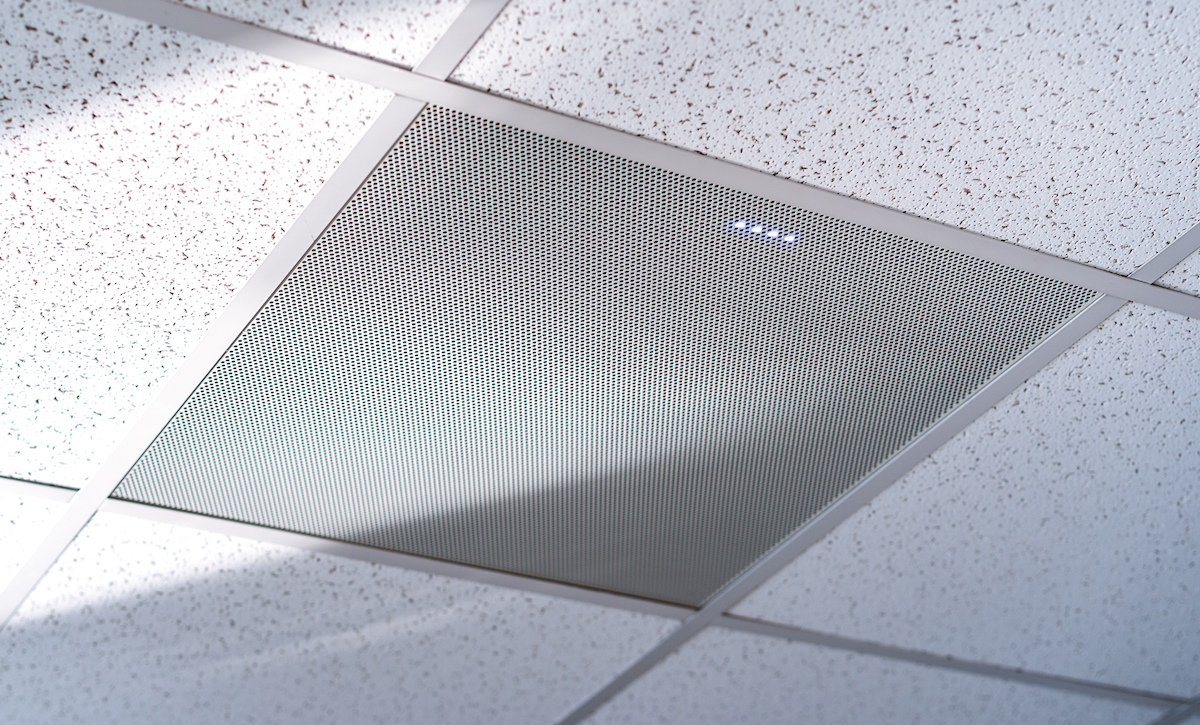
Shure is also an early innovator in this form factor. Its MXA910 ceiling tile microphone array—which, like ClearOne’s offering features AEC and noise cancelling—has been updated recently with the company’s IntelliMix DSP technology that brings signal processing to the device itself. “Whether it’s a corporate conference room, government facility, special event venue, or higher education campus, the ability to tailor the microphone array for challenging acoustical environments is important,” said Pete Herr, associate director of global marketing, integrated systems at Shure.
Assisting with this demand is Shure’s Autofocus Technology, which continually fine tunes the position of each lobe in real time for consistent sound as speakers move about—for example, when they lean back in their chairs or stand up. “This provides a single channel of pre-mixed audio, so single-unit installations can be undertaken without expensive specialist DSP,” Herr said.

Like ClearOne and Shure, Sennheiser is at the forefront of innovation when it comes to mics that can pick up audio from a large space. “While in the past you had to be as close as 1 meter or even less in order to achieve good speech intelligibility, beamforming microphones ensure that you will still be understood by the remote participants of a meeting from speaking distances of 4 or 5 meters,” said Jens Werner, business communication portfolio manager at Sennheiser. “This allows for greater flexibility in the layout of a meeting room and the position of the speaker.”
Sennheiser’s TeamConnect Ceiling 2 microphone array features a combination of real-time recognition of the person speaking and automatic, dynamic beamforming technology that detects the position of the speaker and then aligns its directivity to this position in real time. With the TeamConnect Ceiling 2 microphone array, the automatic change in directivity eliminates the need to adjust the microphone configuration when the room setup is changed or when the number of attendees increases.
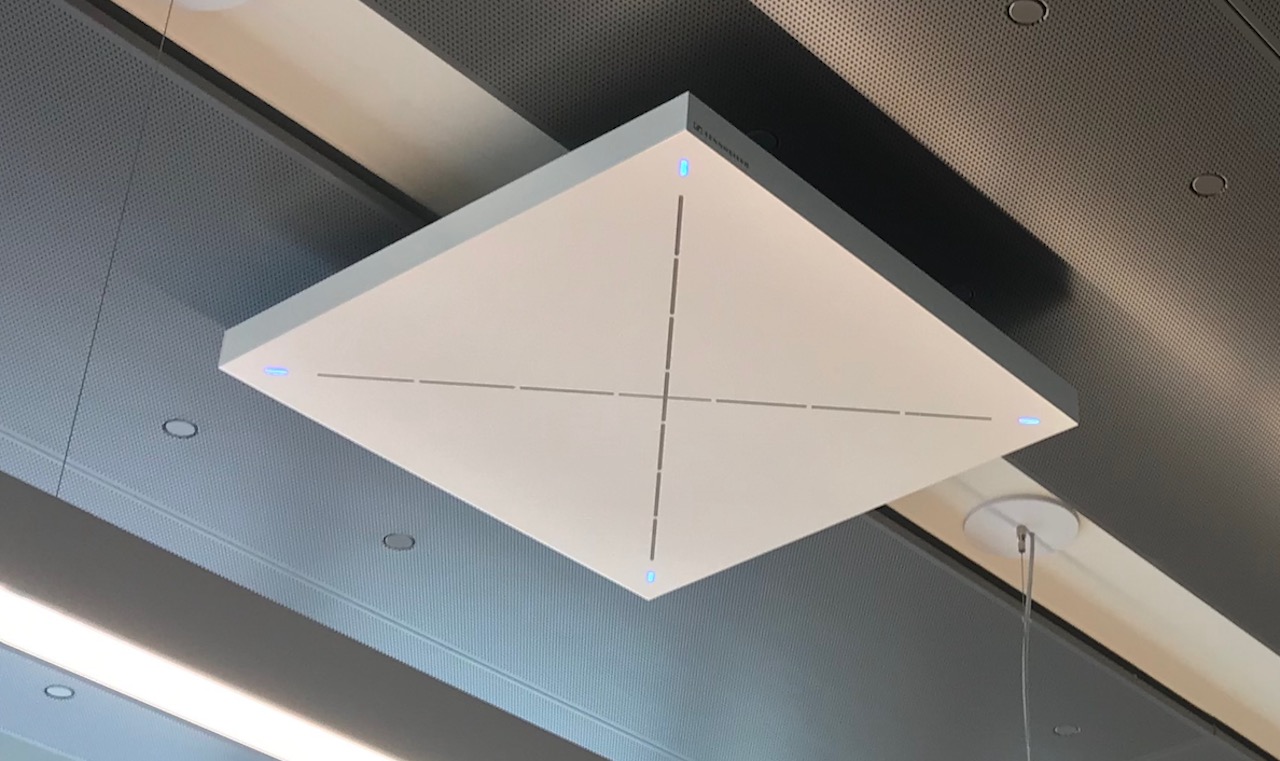
For conferencing spaces without drop ceiling grids, Audix has created a number of ceiling-mounted solutions that feature high-quality sound while blending in with décor. The M70WD is a steerable, flush-mount condenser microphone designed for distance miking in a variety of applications. The capsule is housed within a patented cradle that allows the microphone to be aimed up to an angle of 45 degrees for precise positioning. In addition, the M70WD has complete immunity from RF interference caused by cell phones and GSM devices. And, installing the M70WD requires just one 2-inch hole in the ceiling, with no additional tools needed.
“With a footprint of only three inches in diameter the M70WDvirtually disappears when installed,” said Dave Marsh, director of sales at Audix. “Also, by taking advantage of the Micros Series Technology, our microphones are designed for high speech intelligibility, with very high output and low noise for distance miking—two factors that are extremely important in today’s meeting spaces.”
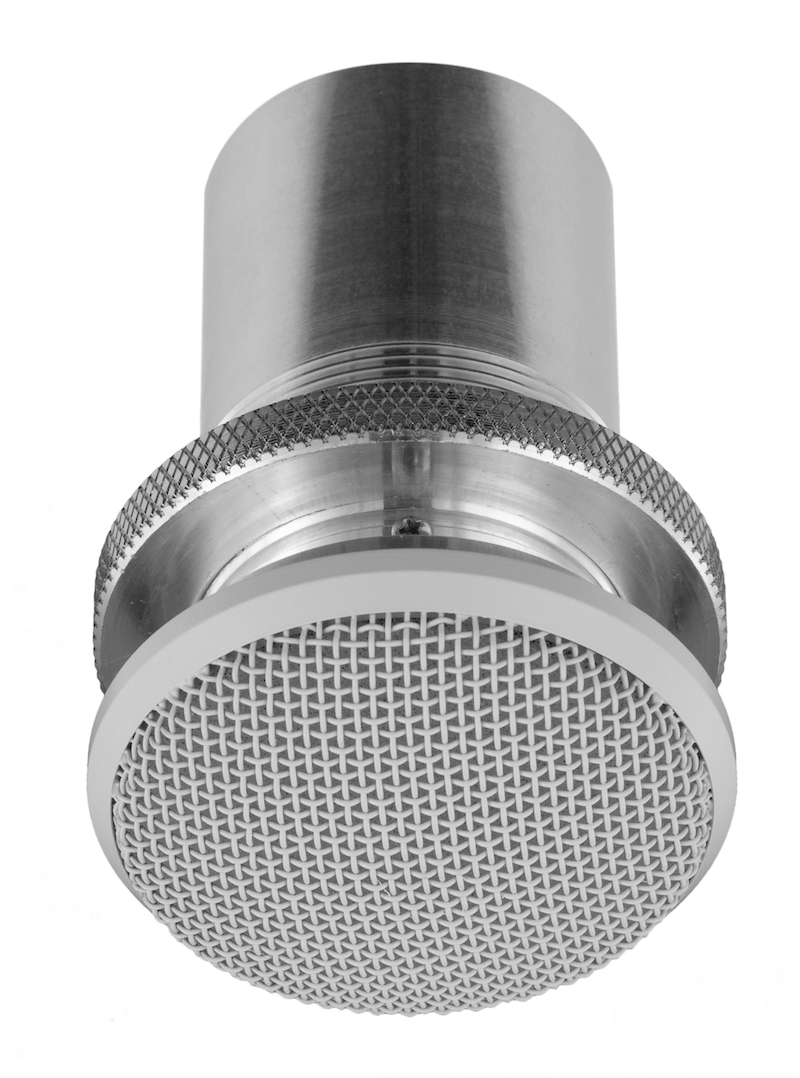
All Around
Of course, ceiling-mounted microphones aren’t the right fit for every space. “After several years of ceiling microphones being the hype in the conferencing market, we are seeing a renaissance of the wireless tabletop microphone,” said Holger Stoltze, senior director of technical sales and marketing at Yamaha Unified Communications. According to Stoltze, reasons for this include the ability to easily mute or completely remove the microphone for privacy reasons, as well as their ability to be positioned in close proximity to the speaker for the best audio quality.
And if you think you know wireless conferencing mics, Stoltze urges you to think again. “Since wireless tabletop mics were introduced, ongoing improvements have been made to their data stability, audio quality, and encryption/security,” he said. The company’s YAI-1 Conference Ensemble is a preconfigured, complete solution that includes wireless microphones and uses the highest encryption standards, including AES-256. Designed to work out of the box, it also ships with speaker line arrays designed specifically for conference rooms.
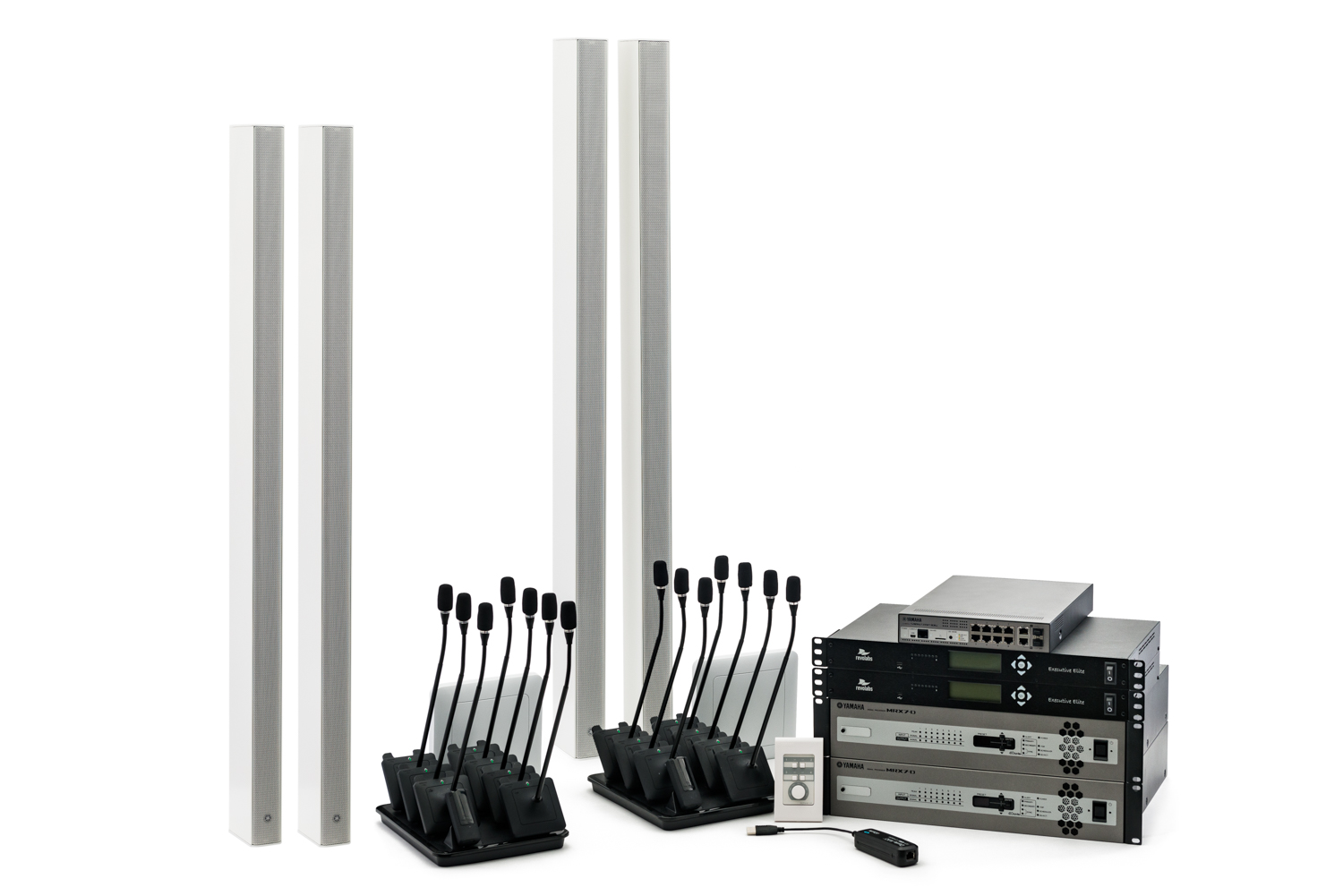
For Biamp, the approach to conferencing mics rests on the use of intelligent arrays of microphone capsules to create “virtual microphones,” and to make this technology available in form factors to suit a variety of needs. “This has allowed designers to define the areas of a room covered by microphones, and in some cases, even allow microphones to follow human voices around a space,” said Chris Fitzsimmons, product marketing manager at Biamp.
At the center of this strategy is the Parlé series, which comes in table, ceiling, and pendant form factors. Featuring the company’s Beamtracking technology—which, like its name implies, can track a speaker who’s moving around a space—Parlé microphones are engineered to make more efficient use of AEC channels on a DSP than competing products, using only a single channel despite generating up to four tracking beams. “They will also soon have the capability to control which areas of a space they track into, allowing designers to eliminate coverage around doors or other unwanted noise sources,” Fitzsimmons said.
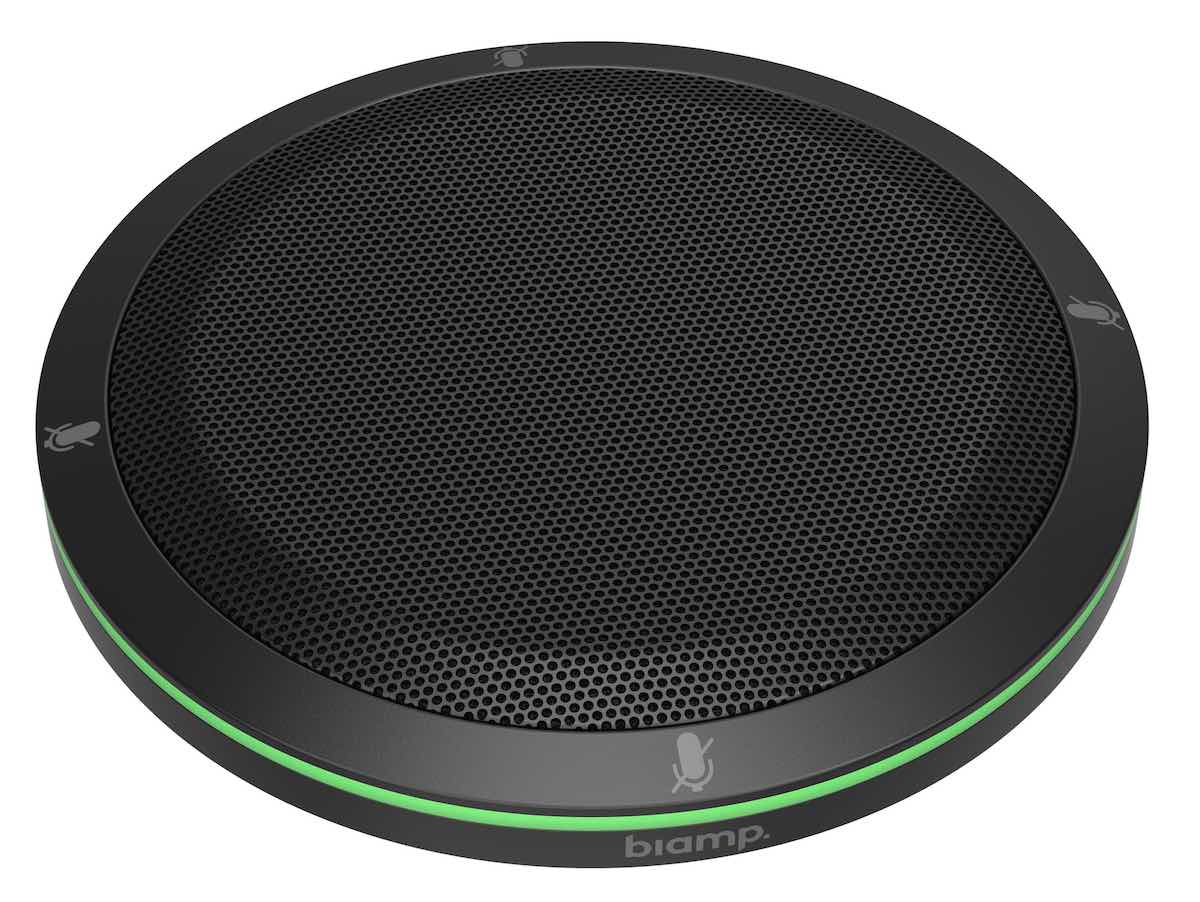
A Sound System
New technology at the device level is great, but where the latest breed of conferencing mics really shine is in their ability to integrate with a facility’s technology ecosystem.
For Yamaha, the advantage is the YAI-1 Conference Ensemble’s simple integration and setup. “Leveraging the power of Dante, the solution fits into most corporate environments, taking advantage of network infrastructure instead of audio cabling,” Holger Stoltze said. “The product simplifies technology managers’ lives significantly because it arrives preprogrammed, with microphones already paired, and the USB connection works with a customer’s existing conferencing system and standard network wires.”
This desire for streamlined setup and management through networked ecosystems led Audix to create the Audix Dante | AES67 Integrated Microphone System. Through it, all microphone functions—including on-off contact closure and LED status indicators—are delivered through a single Cat-5–Cat-7 cable with RJ45 connections. “This simple configuration eliminates wiring errors, accelerates installation, and reduces cost,” Dave Marsh said. “And like all Audix microphones in the system, the gain structure is optimized for its intended use, providing quality audio at the DSP.”
Shure also engineers the MXA910 with features that enable swift deployment. “These include simplified templates and Autofocus Technology for immediate out-of-box setup,” Pete Herr said. “With the Designer software compatibility, it provides unmatched ease of configuration, so installations can happen more quickly and efficiently.” Multiple MXA910s can be incorporated with the Shure IntelliMix P300 Audio Conferencing Processor for simplified room expansion and scalability, thanks to the distributed DSP architecture.
Once installed and set up, network-connected microphones also have another distinct advantage: insight. “Vaddio audio equipment excels when it comes to remote management,” said Beth Peterson. “Our microphones are accessible via our popular web-based user interface.” The new Vaddio Deployment Tool allows integrators and tech managers to configure, manage, and control Vaddio devices across multiple sites for enterprise deployments.
Sennheiser’s TeamConnect Ceiling 2 also allows the tech manager to optimize his or her digital workflows with the Sennheiser Control Cockpit software. “All campus-wide TCC2 microphones can be easily controlled and monitored from anywhere in the corporate network,” Jens Werner said. “As it is browser-based, you can access the mic from any device—for example, a PC, smartphone, or tablet.”
For Biamp, integration with the company’s SageVue management and monitoring platform allows tech managers to “have total visibility into the status of their meeting rooms, be alerted to problems in a variety of ways, and take remedial steps from the web interface without needing to deploy team members physically to a room.”
Better sound, simpler setup, and insight into their status to ensure they’re ready to perform as intended—with today’s microphones, it’s easier than ever to make sure the people who need to use them hardly notice they’re there.
Matt Pruznick is the former editor of AV Technology, and senior editor for Systems Contractor News and Residential Systems. He is based in New York.

